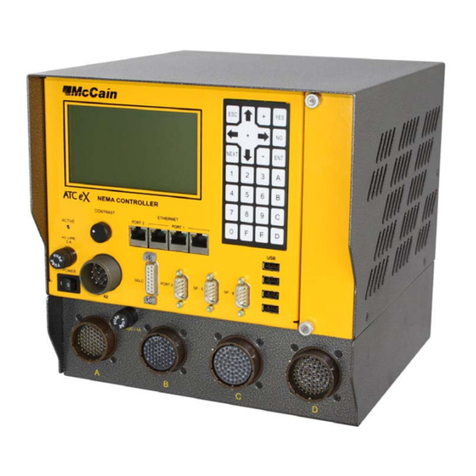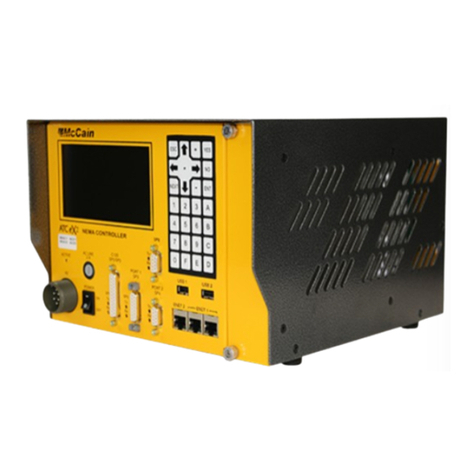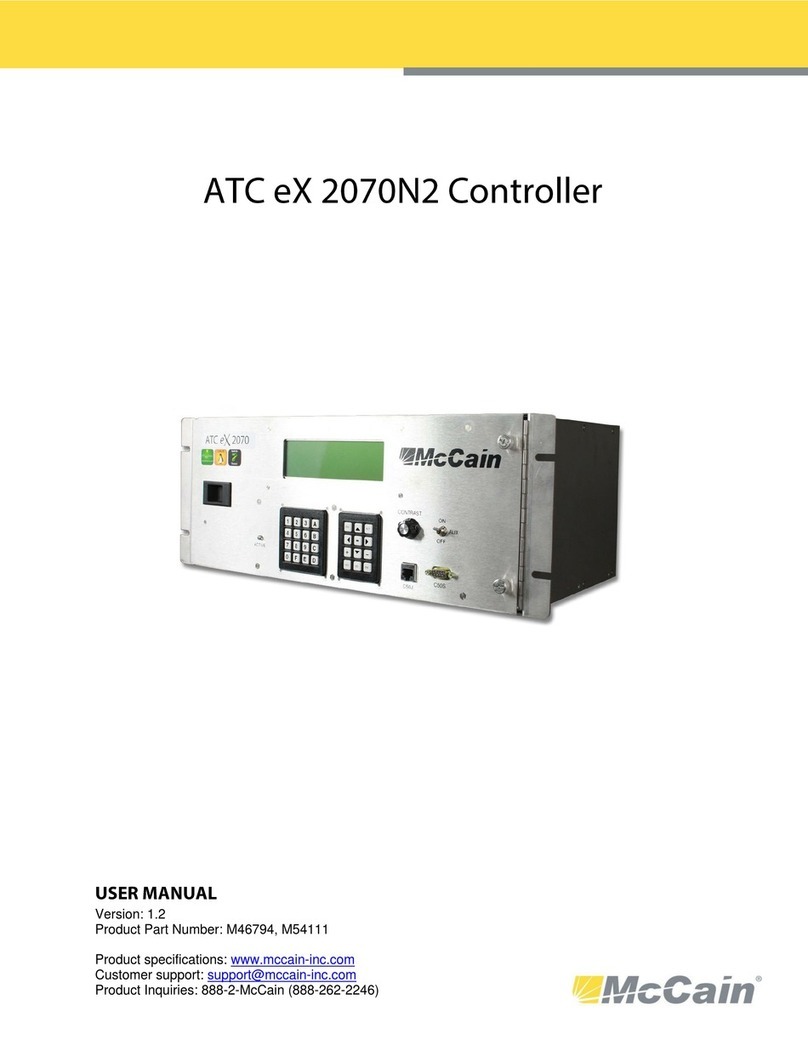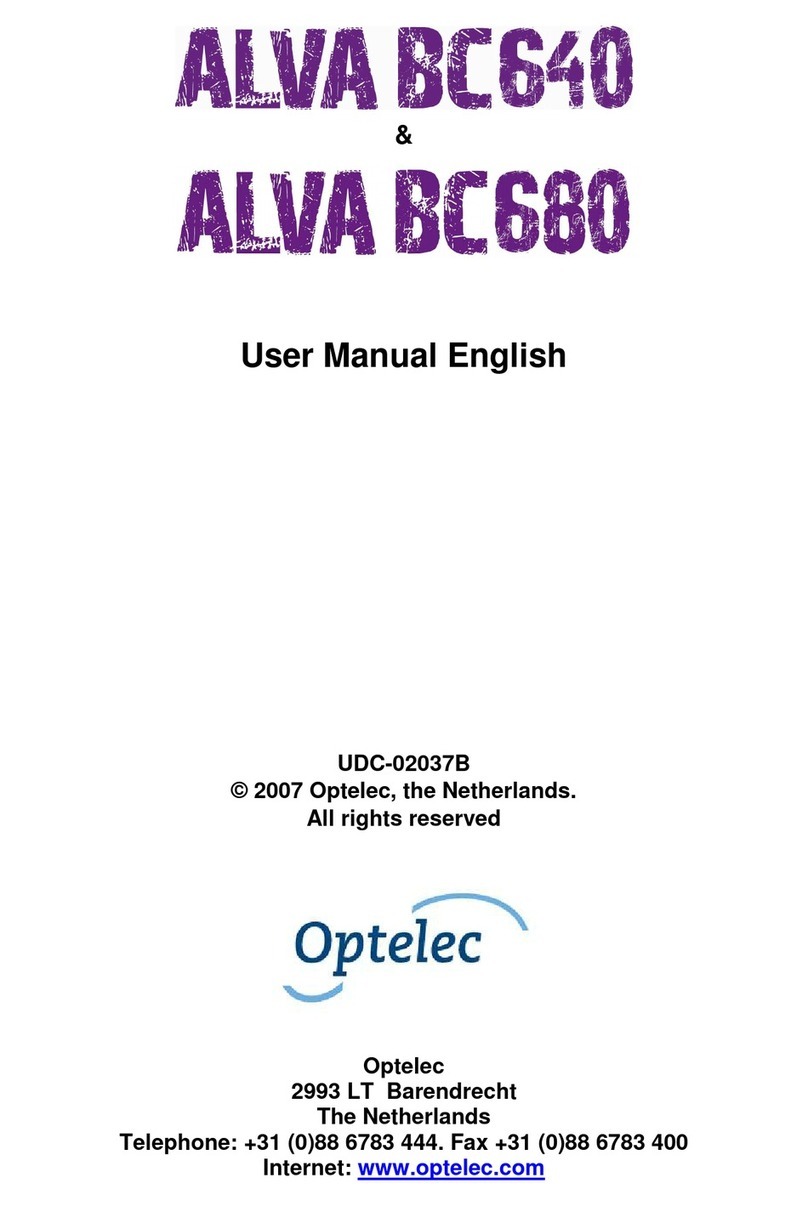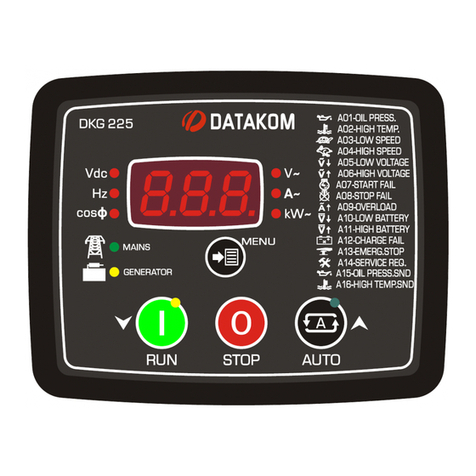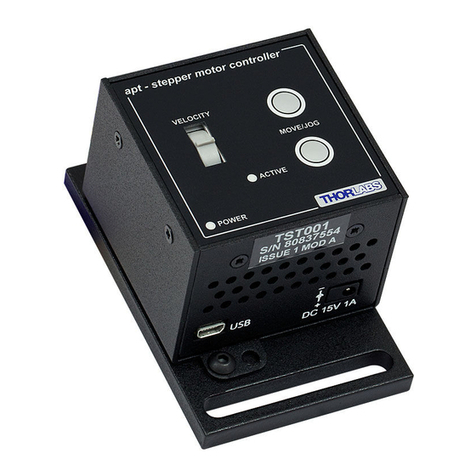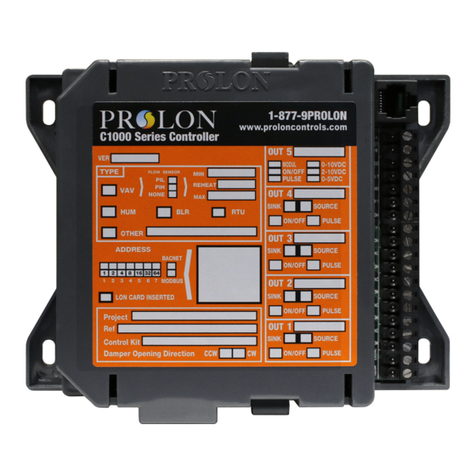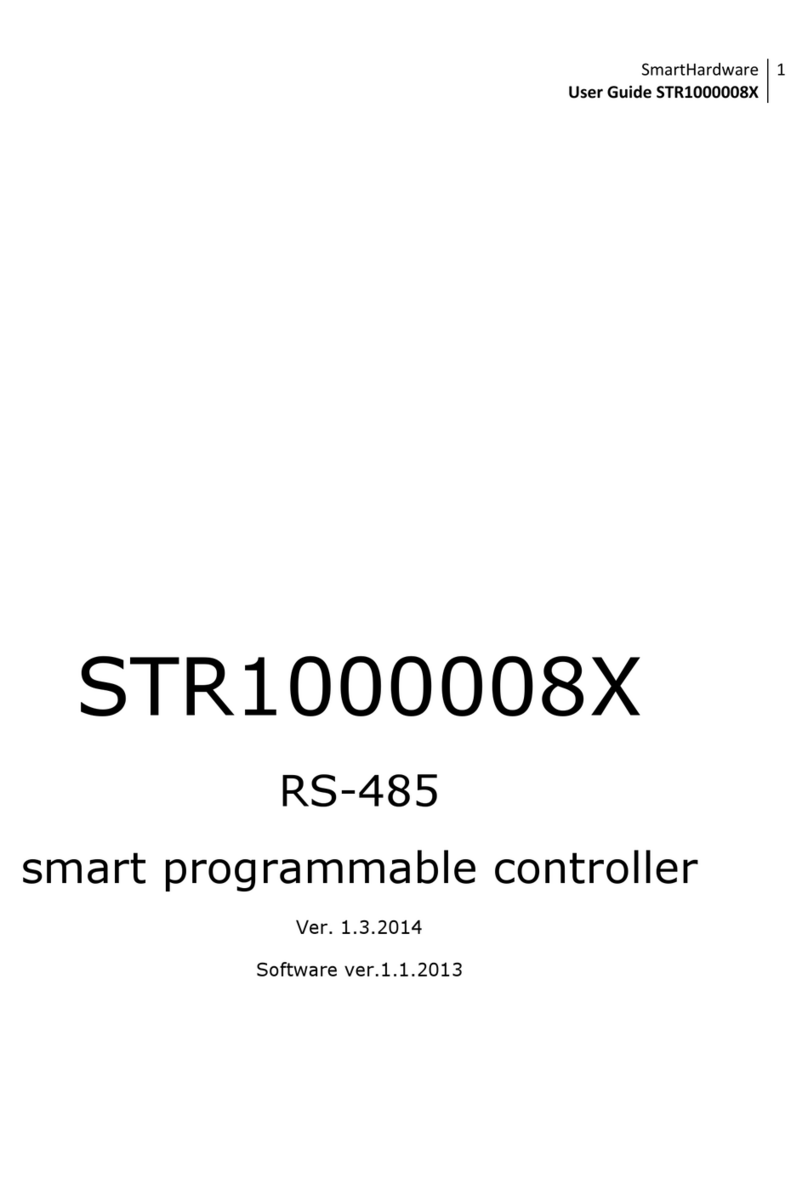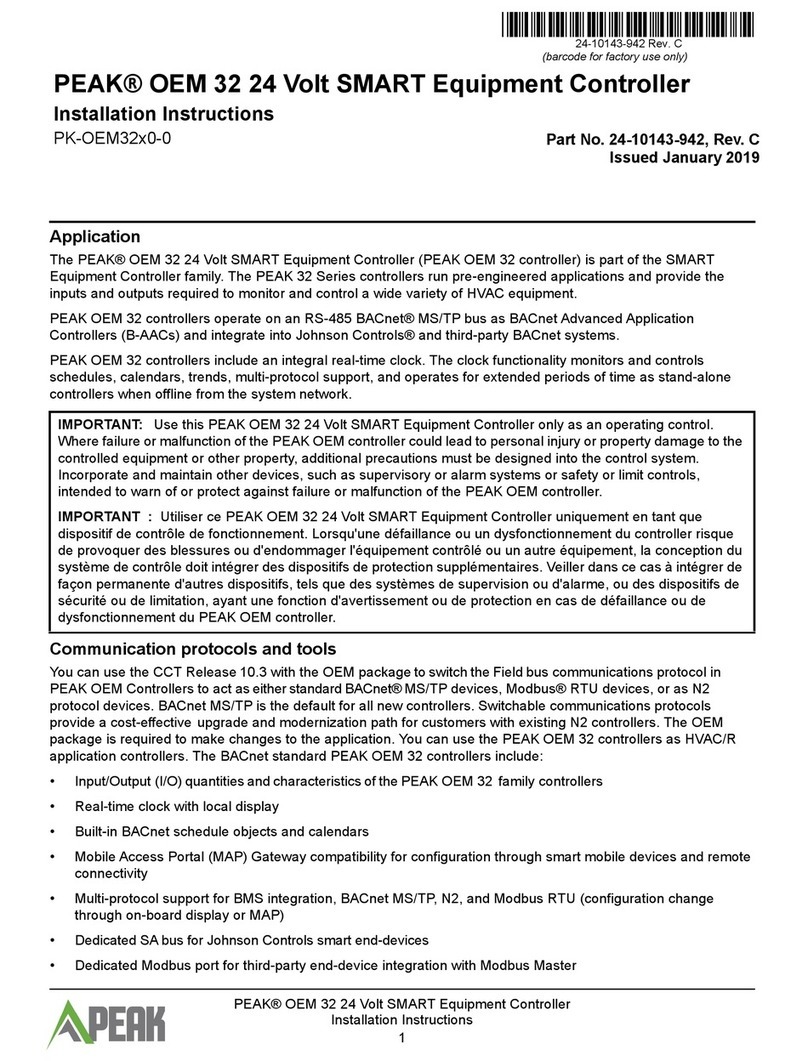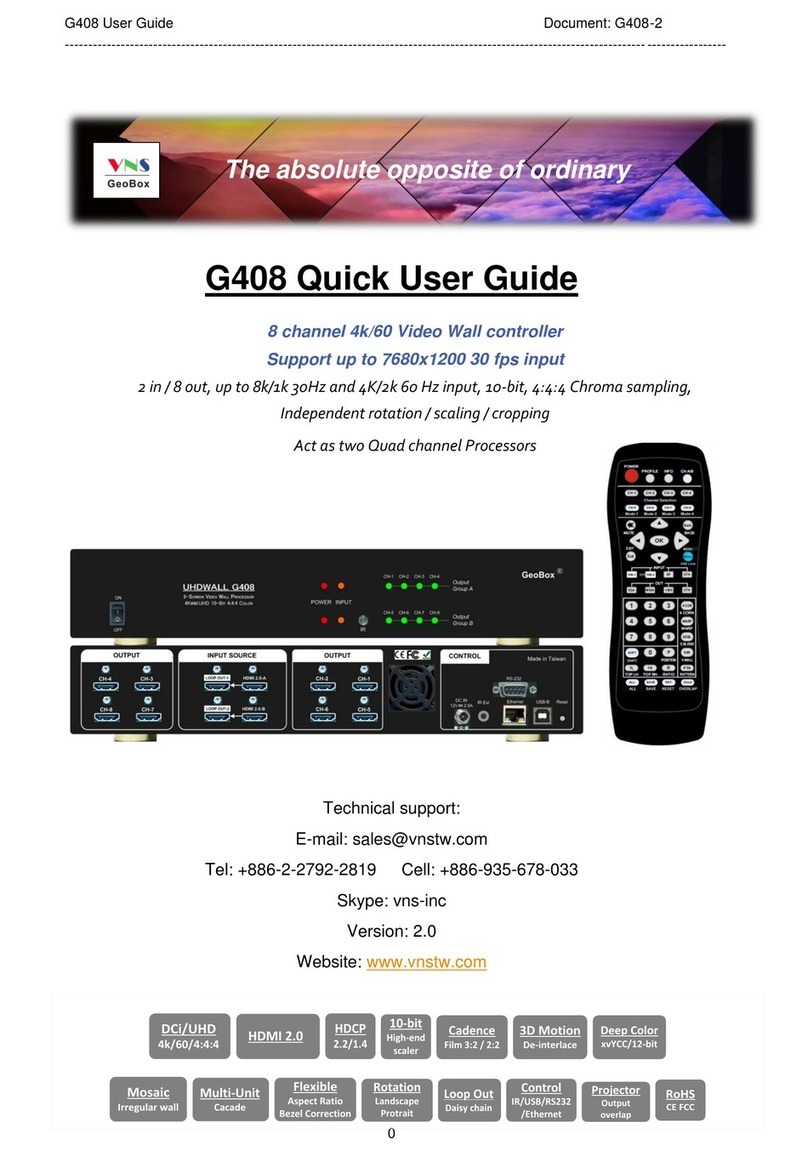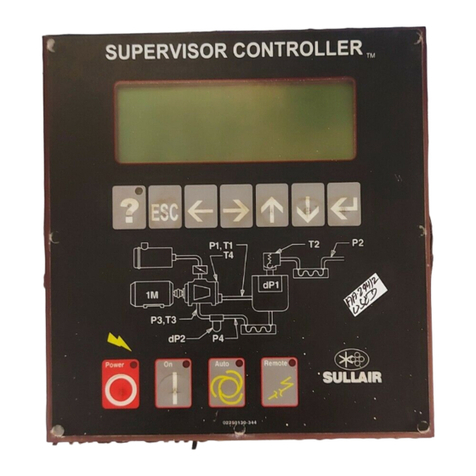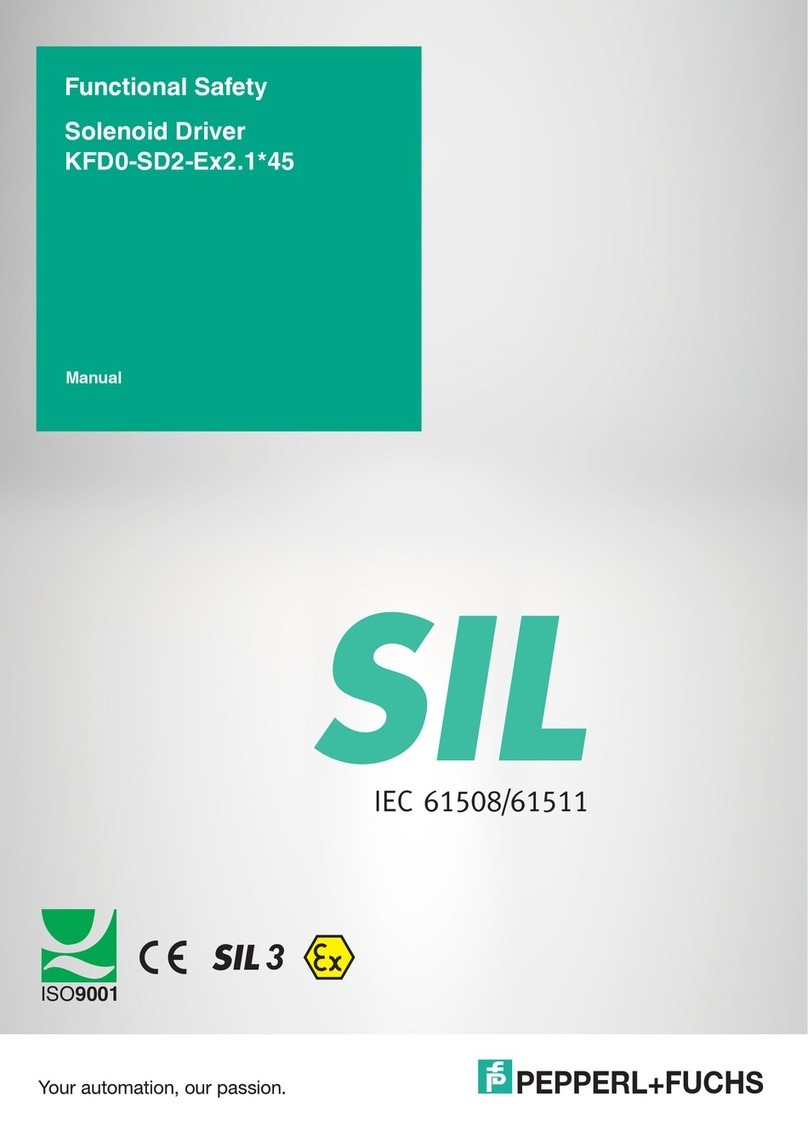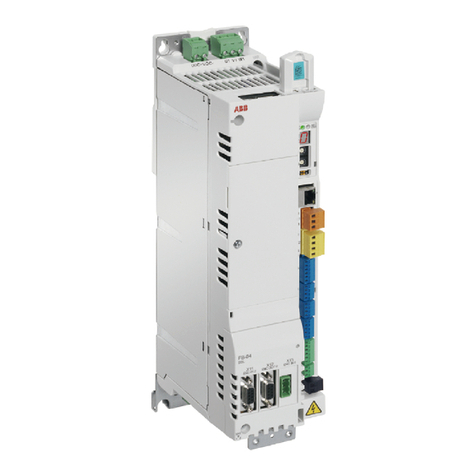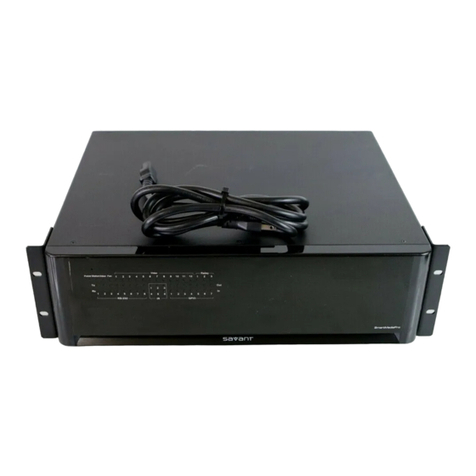McCain FleX M73101S User manual

This page was intentionally left blank

Version
REVISIONS
Rev
By
Date
Comments
1.0
A. Sanchez
Apr/20/2017
Initial release

DISCLAIMERS
User Responsibility
This document is subject to revision. Users of this document are responsible for verifying the current
version status before using this document and or discarding all older revisions.
McCain Inc. shall not be liable for errors contained herein or for incidental or consequential damages in
connection with furnishing, performance or use of this material. MCCAIN MAKES NO WARRANTY OF
ANY KIND WITH REGARD TO THIS MATERIAL, INCLUDING, BUT NOT LIMITED TO, THE IMPLIED
WARRANTIES OF MERCHANTABILITY AND FITNESS FOR A PARTICULAR PURPOSE.
This document contains proprietary and confidential information and is the sole property of McCain. No
part of this document may be photo copied, reproduced, or translated to another language without the
prior written consent of McCain.
This manual is copyright © 2017 by McCain Inc. All rights reserved.
McCain Inc. // 2365 Oak Ridge Way // Vista, CA 92081
PH 760-727-8100
Product Specifications: www.mccain-inc.com
Customer Support: support@mccain-inc.com
Product Inquiries: 888-2-McCain (888-262-2246)

Version
TABLE OF CONTENTS
1INTRODUCTION ................................................................................................................ 1
1.1 Benefits .........................................................................................................................................1
1.2 Controller features.........................................................................................................................1
2GENERAL FEATURES...................................................................................................... 2
2.1 Overview .......................................................................................................................................2
2.2 Controller Operating System.........................................................................................................3
2.3 Enclosure ......................................................................................................................................3
2.4 Hardware Interfaces......................................................................................................................4
2.4.1 Hardware Interface Front Panel ..............................................................................................4
2.4.2 Hardware Interface Back Panel...............................................................................................5
2.4.3 LCD with Backlight ..................................................................................................................6
2.4.4 Auto Contrast...........................................................................................................................6
2.4.5 Keypad ....................................................................................................................................6
2.4.6 Ethernet Ports..........................................................................................................................6
2.4.7 USB Port..................................................................................................................................6
2.4.8 SP4, Terminal PC or General Purpose port............................................................................7
2.4.9 SP1 Port ..................................................................................................................................7
2.4.10 SP2 Port..............................................................................................................................7
2.4.11 SDLC Port, SP3..................................................................................................................7
2.4.12 SP5 Port..............................................................................................................................7
2.4.13 Fuse and Switch..................................................................................................................8
2.4.14 Active LED ..........................................................................................................................8
2.4.15 Aux Switch ..........................................................................................................................8
2.5 Internal Construction / Sub-Assemblies:.......................................................................................8
2.5.1 Front Panel Module.................................................................................................................8
2.5.2 Back Panel Module................................................................................................................11
2.5.3 Bottom Panel Module............................................................................................................11
2.5.4 Internal Wiring. ......................................................................................................................13
2.6 Physical and Environmental Details:...........................................................................................14
3CONTROLLER BOOT-UP.................................................................................................16
3.1 Controller Follows Up the Next Boot Sequence:.........................................................................16
4MAINTENANCE, ADJUSTMENTS AND TROUBLESHOOTING ......................................21
4.1 Preventive Maintenance..............................................................................................................21
4.2 Control Signals Board Adjustment..............................................................................................21

4.3 Trouble Shooting Analysis ..........................................................................................................21
4.3.1 DAT........................................................................................................................................21
APPENDIX ...............................................................................................................................22
APPENDIX A: ASSEMBLY DRAWINGS..................................................................................23
APPENDIX B: BILL OF MATERIALS.......................................................................................51
APPENDIX C: CONNECTOR’S DETAIL ..................................................................................52
APPENDIX D: UPDATING KERNEL AND UBOOT..................................................................56

Version
TABLE OF FIGURES
Figure 1: FleX Controller Models. .................................................................................................................2
Figure 2: Hardware Interfaces on the Front Panel of FleX Shelf Mount Controller. .....................................4
Figure 3: Hardware Interfaces on the Front Panel of FleX Rack Mount Controller. .....................................4
Figure 4: Hardware Interfaces on Back Panel of FleX Shelf Mount Controller.............................................5
Figure 5: Hardware Interfaces on Back Panel of FleX Rack Mount Controller.............................................5
Figure 6: Auxiliary Switch codes...................................................................................................................8
Figure 7: Bottom Module.............................................................................................................................12
Figure 8: FleX Shelf Mount Controller dimensions. ....................................................................................14
Figure 9: FleX Rack Mount Controller dimensions. ....................................................................................15

FleX Controller –User Manual 1
Version 1.0
1 INTRODUCTION
The McCain’s FleX Controller is an advanced, multi-application controller that simultaneously supports
multiple software applications through a single platform. The FleX Controller features a wide variety of
communications options, including serial and Ethernet for connectivity in any kind of environment.
Quick data transfers, firmware upgrades, and log retrievals can be done via USB.
The controller’s Linux operating system provides a robust, FleXible, open-architecture platform that can
support third party applications.
1.1 Benefits
The controller can be used in ATC and NEMA Cabinets.
Simultaneously supports multiple transportation software applications.
Multi-tasking ability minimizes the amount of hardware required at intersections.
1.2 Controller features
Operating system: Linux.
Microprocessor: Freescale MPC8360 PowerQuicc II Pro microprocessor running at 400MHz.
Memory:
16MB NOR Flash Memory.
256MB NAND Flash Memory.
256MB DDR2.
2MB Non-volatile SRAM.
Backup real-time clock (RTC).
CONTROLLERS’ INTERFACES:
1 SDLC port.
1 Serial (asynchronous) port.
2 Serial (asynchronous) ports.
ENET 1: 100 Base-T Ethernet switch, with two RJ-45 connectors.
ENET 2: 100 Base-T Ethernet switch, with three RJ-45 connectors.
2 USB ports
SP3 and SP5: Supported on C12S connector.
1 Wi-Fi Interface.
1 SD card receptacle.
1 Datakey receptacle.

2
FRONT PANEL INTERFACE
Display: 16 lines x 40 characters.
Keyboard: 7 x 4 keypad (28 key).
2 GENERAL FEATURES
2.1 Overview
The FleX Controller is available in eight models; four models for shelf mounting and four models for rack
mounting described in the table of the Figure 1.
PART NUMBER
DESCRIPTION
FEATURES
FIO
WIFI
SERIAL INTERFACE
SHELF MOUNTING CONTROLLERS
M73101S
FLEX SHELF MOUNT CONTROLLER
M73101SA
FLEX SHELF MOUNT CONTROLLER, CALTRANS
M73101SW
FLEX SHELF MOUNT CONTROLLER, WIFI
M73101SWA
FLEX SHELF MOUNT CONTROLLER, WIFI, CALTRANS
RACK MOUNTING CONTROLLERS
M73101R
FLEX RACK MOUNT CONTROLLER
M73101RA
FLEX RACK MOUNT CONTROLLER, CALTRANS
M73101RW
FLEX RACK MOUNT CONTROLLER, WIFI
M73101RWA
FLEX RACK MOUNT CONTROLLER, WIFI, CALTRANS
Figure 1: FleX Controller Models.
The FleX Controller units use an engine board based on ATC 6.24 standard and TEES 2009 ERRATA 2;
with the MPC8360 core at 400MHz, 256MB DRAM, 16MB NOR FLASH, 256MB NAND FLASH and 2MB
SRAM.
The unit has three RS-232 asynchronous serial communication ports with software selectable speed from
1.2Kbps to 115.2Kbps, these ports (SP1, SP2 and SP4) are available over DB-9 female connectors. SP1
and SP2 ports are located on the back panel and SP4 port is located on front panel, this port is used
primarily for connecting a terminal computer or as a general purpose.
Two SDLC ports are designated to synchronous communications to cabinet’s serial bus, they are RS-485
serial communication port with software selectable speed from 19.2Kbps to 614Kbps available over a
DB-15 female connector for a NEMA Cabinet (SDLC SP3) or over a DB-25 female connector for ATC
Cabinet (C12S, SP3/SP5) both on the back panel.
The unit also has 2 high speed USB ports to download and upload databases. These ports are connected
to a USB hub which is routed to the ATC Engine. One USB port is located on the front panel and the
second port is located on the back panel of the controller.
Five 100MBPS Ethernet ports are provided for communicating with a central, connecting to peripheral
devices, and also for operating as a remote terminal to download/upload files, updates, log files, etc. Two
of them are installed in the front panel, the other two Ethernet ports are installed in the back panel and
one is located inside of the controller, in the hostboard PCB assembly.

FleX Controller –User Manual 3
Version 1.0
The interface for the user is an LCD with backlight and a 28-keys keypad to enter/retrieve all information
about the status of the controller’s or traffic application.
ACTIVE LED shows the status of the controller’s traffic application.
A rocker switch is used for turning ON and OFF the controller and AC line fuse holder for a 2A fuse with
front access.
The functionality of the several modules/sub-assemblies which conform the controller unit is described in
the below sections.
2.2 Controller Operating System
The Operating system is Linux with kernel version 2.6.39.4 or newest with the /atc directory mounted into
a NAND memory.
After boot-up the ATC Linux OS is available to run applications and for accessing to the low level drivers
(block, character and network) provided by the kernel. The OS is stored into a FLASH memory; this can
be updated by using the Linux console or Ethernet Ports. A Linux console is configured at power up to a
speed of 115.2Kbps, no parity, 8 bits and one stop bit.
2.3 Enclosure
The FleX Controller is divided in two model lines according of the mounting style (shelf and rack
mounting); both model lines have the same electronics characteristics but different physical dimensions.
The FleX Controller has a modular design composed by a front module, back module, bottom module and
a top cover; the rack version of the FleX Controller also includes two brackets in order to install the
controller onto a rack.
The top cover of the FleX controller is closed and free of any vent or openings to avoid dirt, dust, water or
other debris entering from the top of the unit. Ventilation holes are provided on the sides of the unit in
order to cool the electronics; the design is such that foreign debris and water cannot easily enter case
under normal operation and handling.
The controller is constructed so that it can be shipped easily via common carrier, such as the postal
service, UPS, or Federal Express, without damage and without disassemble or removal of internal
components or sub-assemblies.

4
2.4 Hardware Interfaces
The FleX Controller’s interfaces to the cabinet, to other external devices, or to the user are accessible
from the front panel and back panel.
2.4.1 Hardware Interface Front Panel
The front module contains the hardware used by the user to interact with the controller. The hardware
interfaces located at the front panel on both model lines are the following (Figure 2, Figure 3) : power
switch, fuse holder, auxiliary switch, SP4 serial port, 2 Ethernet ports, USB connector, datakey
receptacle, SD card receptacle, switch to activate / deactivate Wi-Fi communication network with a status
led (this feature is included depending of the model), LCD display, keypad and an ACTIVE LED indicator.
Figure 2: Hardware Interfaces on the Front Panel of FleX Shelf Mount Controller.
Figure 3: Hardware Interfaces on the Front Panel of FleX Rack Mount Controller.

FleX Controller –User Manual 5
Version 1.0
2.4.2 Hardware Interface Back Panel
The hardware interfaces located at the back panel on both model lines are the following (Figure 4, Figure
5) : 1 USB connector, 2 Ethernet ports, two asynchronous ports over DB-9 female connectors, two
synchronous ports over a DB-15 and a DB-25 female connectors, 64 input ports and 64 output ports
distributed in the C1S and C11S connectors (this feature is included depending of the model).
Figure 4: Hardware Interfaces on Back Panel of FleX Shelf Mount Controller.
Figure 5: Hardware Interfaces on Back Panel of FleX Rack Mount Controller.

6
The following will describe each interface from front panel and back panel.
2.4.3 LCD with Backlight
The controller unit has a 16 lines X 40 Columns LCD display with LED backlight. This is the visual
interface of the user with the controller unit; through the different menus of the traffic application, it
displays current status, entered values and functions of the traffic application and other useful information
for the operation of the controller unit.
The LCD backlight is turned on when any key from keypad is depressed and it extinguishes after 60
seconds, this time can be programmed to be from 0 to 630 seconds.
The LCD operating range is from –20°C to +70°C.
2.4.4 Auto Contrast
The auto CONTRAST adjusts the LCD display contrast for user’s optimum viewing.
2.4.5 Keypad
The controller unit includes a 28 keys keypad to allow user for navigating and entering values to the
contents of the LCD menus.
The keys are identified as: ESC (escape), NEXT, ENT (enter), YES, NO, ARROW DOWN, ARROW UP,
ARROW RIGHT, ARROW LEFT; numbers 1, 2, 3, 4, 5, 6, 7, 8, 9, 0; and letters A, B, C, D, E and F.
These keys allow the user to navigate thru the content of the LCD menus, confirm status, modify timing
parameters, setting date and time, configuring serial ports and all other interaction with the traffic
application.
2.4.6 Ethernet Ports
There are five Ethernet ports available: two ports on the front panel, two ports on the back panel and one
port inside the controller.
ETH1 is a 10/100 Base-T Ethernet switch with two RJ-45 jack connectors, one connector is located on
the front panel which is used for accessing to the controller’s operating system and the other connector is
located on the back panel and can be used to handle traffic applications needs, such as configuration,
databases, etc. They are labeled as “ENET 1”.
ETH2 is a 10/100 Base-T Ethernet port with three RJ-45 jack connectors; the first connector is located on
the front panel, the second connector is located on the back panel and the third connector is inside the
controller which is mounted on the hostboard assembly. These Ethernet ports are used to handle traffic
applications needs. They are labeled as “ENET 2”.
Each jack has two LED indicators to show the LINK ACT and 10-100 TX status.
2.4.7 USB Port
Two hot-swappable USB connectors are installed on the FleX controller, one in the front panel and
another USB connector in the back panel in order to allow the controller support the use of USB memory

FleX Controller –User Manual 7
Version 1.0
devices for transferring data files from and to the controller; these data files can be firmware upgrades,
databases, etc. They are labeled as “USB”.
2.4.8 SP4, Terminal PC or General Purpose port
SP4 is a general purpose port but it is primarily used for connecting a terminal and to perform data
transfer between the controller and an external computer. It is located on front panel on a DB-9 female
connector with jackscrews and two indicator leds (Tx and Rx). It is labeled as “SP4”. RTS, CTS and DCD
lines are not available on this port.
This port uses RS-232 asynchronous serial communications with a software selectable speed from
1.2Kbps to 115.2Kbps, with a default speed of 115.2Kbps.
2.4.9 SP1 Port
SP1 Port is a general purpose port; it is located on the back panel on a DB-9 female connector with
jackscrews and two indicator leds (Tx and Rx). It is labeled as “SP1”. This port uses RS-232
asynchronous serial communications with software selectable speed from 1.2Kbps to 115.2Kbps, with a
default speed of 9.6Kbps.
2.4.10 SP2 Port
SP2 Port is a general purpose port; it is located on the back panel on a DB-9 female connector with
jackscrews and two indicator leds (Tx and Rx). It is labeled as “SP2”. This port uses RS-232
asynchronous serial communications with software selectable speed from 1.2Kbps to 115.2Kbps, with a
default speed of 9.6Kbps.
2.4.11 SDLC Port, SP3
SP3 port is located on back panel as a DB-15 female connector with jackscrews and two indicator leds
(Tx and Rx). It is labeled as “SDLC SP3”, it is also available throw the DB-25 female connector labeled as
“C12S SP3/SP5”.
This port uses a SDLC communication protocol and four (Tx, Rx, TxClk and RxClk) EIA-485 differential
serial communications interfaces with a default speed of 153.6 Kbps in order to meet NEMA TS2-1998
specification. The port has a software selectable speed of 19.2Kbps, 38.4Kbps, 57.6Kbps, 76.8Kbps,
115.2Kbps, 153.6Kbps and 614.4Kbps.
The pin 10 of this port is dedicated to disable all port communication when desirable; this is accomplished
by connecting 0 VDC to this pin. The following pins has 0 VDC: 2, 4, 6 and 8.
This port is primarily dedicated to synchronous communications in a TS2 NEMA cabinet (BIU’s, MMU).
This port is connected to cabinet’s serial bus NEMA cabinet. The connection to the cabinet is thru a
SDLC communications cable connected to the SDLC port at one end and to the termination board on the
other end.
2.4.12 SP5 Port
SP5 Port is located on back panel on a DB-25 female connector with jackscrews and two indicator leds
(Tx and Rx). It is labeled as “C12S SP3/SP5”.

8
This port uses four (Tx, Rx, TxClk and RxClk) EIA-485 differential serial communications interfaces. The
port has a software selectable speed of 19.2Kbps, 38.4Kbps, 57.6Kbps, 76.8Kbps, 115.2Kbps,
153.6Kbps and 614.4Kbps. The default speed is 614.4Kbps.
2.4.13 Fuse and Switch
There is a fuse holder with a 2 AMP fuse (3AG type) for the AC line located on the front panel which is
easily removed without using any tools. Also there is a rocker switch used to power on and off the
controller unit.
2.4.14 Active LED
This LED is used to indicate the status of the controller as defined for the application running into the
controller.
2.4.15 Aux Switch
When the AUX Switch is toggled, the appropriate AUX Switch code is transmitted to the CPU.
AUX SWITCH CODES
SWITCH POSITION
ASCII DATA (TEXT)
ASCII DATA (HEX)
ON
ESC O T
1B 4F 54
OFF
ESC O U
1B 4F 55
Figure 6: Auxiliary Switch codes.
2.5 Internal Construction / Sub-Assemblies:
This section briefly describes the construction and operation of each sub-assembly of the FleX controller,
indicating the interface connectors on each board and the relationship to the other boards.
For a more detailed understanding of a specific module or sub-assembly please refer to the proper
appendices.
Appendix A Contains the assembly drawings.
Appendix B Contains the bills of materials.
2.5.1 Front Panel Module
The sub-assemblies installed onto the front panel are described below:
2.5.1.1 Host Board Sub-Assembly (M58570A).
This sub-assembly supports almost all of the circuitry and physical connections of the communication
interfaces, as the name indicates, it is the host which supports the engine board, so it contains all the
necessary circuitry to receive all communication channels, control lines from the engine board and all the
necessary I/O interfaces to the external world.
Below are briefly described the circuits and interfaces included onto the host board:

FleX Controller –User Manual 9
Version 1.0
Two 50pos receptacle connectors to allow the Engine board to be plugged (P1 and P2).
The +5VDC backup circuit.
An ACTIVE LED driver circuit.
A 8 position connector (P3) to receive DC voltages and control signals.
One D-sub 9 positions connector (SP4) with indicator leds (Tx and Rx).
Two Ethernet switches and three Ethernet jack connectors (RJ1, RJ2, RJ3).
A USB switch.
An SPI EEPROM with factory set configuration parameters.
A twenty positions header (P8) for attaching the LCD display.
A fourteen positions header (P7) for plugging the keypad.
A buzzer (BZZ1) as an audible interface to the user.
An auxiliary switch.
Four box shrouded headers (SERIAL 1, SERIAL 2, FIO and WIFI) to connect and communicate
with the sub-assemblies installed on the controller.
2.5.1.2 Engine Board Sub-Assembly (M52284A).
This module is the brain of the FleX Controller; all computational functions are concentrated here; it
contains the CPU, memory devices, and serial interface devices providing synchronous and
asynchronous serial communications channels, Ethernet interfaces, USB interface, RTC, and a SPI bus.
It uses Linux operating system.
The board hardware features are:
CPU, it is a Freescale microprocessor is a MPC8360 at 400MHz
NOR FLASH, 16MB are provided for storing the operating system and the applications programs.
NAND FLASH, 256MB are provided for storing the operating system and the applications
programs.
SRAM, 2MB are provided for non-volatile parameter storage.
DDR2, 256MB are provided for application and OS program execution.
RTC.
Seven serial communication channels (SP1, SP2, SP3, SP4, SP5, SP6 and SP8).
SP1 and SP2 designated for asynchronous communication located on back panel.

10
SP3 for synchronous communication channel, it is the SDLC port on controller’s back panel and
also available on the “C12S SP3/SP5”.
SP4 for a terminal and general purpose port on controller’s front panel.
SP5 for a general purpose port (C12S SP3/SP5) on controller’s back panel.
SP6 for handling the LCD’s and keyboard information.
Two Ethernet interfaces (ETH1 and ETH2) with five jack connectors. These interfaces go to the
Ethernet switches on the host board.
Two USB interfaces that goes to the USB switch on host board.
One SPI bus that handles the communication to the Field I/O board installed on the back panel.
Two 50 positions plug connectors to be attached to a host board.
2.5.1.3 Wi-Fi Board Sub-Assembly (M58572A).
This sub-assembly is mounted onto the host board by using two brackets and its connectors are
accessible through the front panel. This sub-assembly is installed only if the controller’s model requires it.
The board hardware features are:
A Wi-Fi 802.11 Module.
SD card receptacle.
Data key receptacle.
One USB interface that goes to the USB switch on host board.
A switch to activate/deactivate the Wi-Fi function with a status led.
A harness (WIFI) to connect the board to the host board (M58570A).
2.5.1.4 SD Card/USB/DK Board Sub-Assembly (M73097A).
This sub-assembly is mounted onto the host board by using two brackets and its connectors are
accessible through the front panel. This sub-assembly is installed only if the controller’s model requires it;
the only difference with the M58572A sub-assembly is that this sub-assembly (M73097A) does not
contain the Wi-Fi feature.
The board hardware features are:
SD card receptacle.
Data key receptacle.
One USB interface that goes to the USB switch on host board.
A harness (WIFI) to connect the board to the host board (M58570A).

FleX Controller –User Manual 11
Version 1.0
2.5.2 Back Panel Module
The sub-assemblies installed onto the back panel are described below:
2.5.2.1 Serial Interface Board Sub-Assembly (M58571A).
This serial communications interface board is used to interface with devices that are part of ITS and
NEMA cabinets. The LINESYNC, POWERDOWN and POWERUP signals are available on this board.
Below are briefly described the circuits and interfaces included onto the serial interface board:
Two Ethernet jack connectors (RJ1, RJ2).
One USB interface that goes to the USB switch on host board.
Two asynchronous communication ports (SP1 and SP2) over DB-9 female connectors.
SP3 for synchronous communication channel, it is available on “SDLC SP3” and “C12S
SP3/SP5”.
SP5 for synchronous communication channel, it is only available on the “C12S SP3/SP5”.
Two harnesses (SERIAL 1 and SERIAL 2) to connect the board with the host board (M58570A)
and receive the voltage power.
Indicator leds for Tx and Rx status for the communication ports.
Circuitry to provide 5V isolated.
2.5.2.2 Field I/O Board Sub-Assembly (M58573A).
This sub-assembly provide input and output ports to interact to the external world. The LINESYNC,
POWERDOWN and POWERUP signals are available on this board.
This sub-assembly contains the below circuits and connectors:
64 parallel input ports and 64 parallel output ports supported on the C1S and C11S connectors.
One harness (FIO) to connect the Field I/O board with the host board (M58570A).
A three positions header for receiving the voltage power from the control signal board (M58574A).
Circuitry to provide +5 and +12 isolated voltages.
A two positions header to configure the watch dog function.
2.5.3 Bottom Panel Module
The bottom module (Figure 7) is composed by one main bottom panel provided with openings to cool the
electronic components; on this panel is installed another panel used to support the power supply and the
control signals assembly used to supply the necessary lines to the Hostboard assembly. The bottom
module is also provided with a RTC (Real Time Clock) backup capacitor and four bumpers foot in order to
place the controller upon a shelf.

12
Figure 7: Bottom Module.
The sub-assemblies installed onto the bottom panel are described below:
2.5.3.1 Power Supply Sub-Assembly (M45891).
This sub-assembly consists of a switching power supply module with a large can back up capacitor. It
provides the DC voltages to the Control Signals board (M58574A) and receives the AC power from such
board. The DC voltages provided are +24VDC, +12VDC and +5VDC.
2.5.3.2 Control Signals Board Sub-Assembly (M58574A).
This board generates the POWERDOWN, POWERUP and LINESYNC signals and along with the DC
voltages received from the power supply assembly. It also sends the signals and voltages to the other
sub-assemblies through the corresponding harness.
The board also has a circuit to define the trip and recover window for the AC power input; this is a factory
set adjustment and should not be changed. The default is: 85VAC for power down and 90VAC for power
up.
This sub-assembly contains the below circuits and connectors:
A five positions header (AC INPUT) for receiving the AC power input.
A two positions header (FUSE/SWITCH) for connecting the AC+ line to the fuse and switch
located on the front panel.
A three positions header (AC OUTPUT) for providing the AC power to the power supply sub-
assembly (M45891).
A five positions header (DC INPUT) for receiving de DC power from the power supply sub-
assembly (M45891).
An eight positions header (DC FOR HOST) for providing the +5VDC power, POWERDOWN,
POWERUP and LINESYNC signals to the hostboard (M58570A).
A three positions header (DC FOR FIO) for providing the +5VDC and +12VDC power to the Field
I/O board (M58573A).

FleX Controller –User Manual 13
Version 1.0
A three positions header (DC FOR EXT. DEVICE) for providing the +5VDC and +12VDC power
to a future external device.
An AC filter circuit at the AC power input.
A zero-crossing detector.
An AC hysteresis trip/recover adjustment (POT1).
Circuitry for generating the POWERDOWN, POWERUP and LINESYNC signals.
2.5.4 Internal Wiring.
A set of harnesses is provided for interconnecting the internal sub-assemblies of the FleX controller.
Below are described the labels on the plug connectors and the connector headers where they belong.
Harnesses:
Harness HOSTBOARD - CTRL SGNLS:
Connect “HOSTBOARD” housing into “P3” header on Host Board (M58570A), connect “CTRL SGNLS”
housing into “DC FOR HOST” header on Control Signals board (M58574A).
Harness FIO - C. S (Only applies to the models that possess the feature of the FIO):
Connect “FIO” housing into “P1” header on Field I/O board (M58573A), connect “C.S.” housing into “DC
FOR FIO” header on Control Signals board (M58574A).
Harness CN1 –AC OUT:
Connect “CN1” housing into “CN1” header on Power Supply Assembly (M45891), connect “AC OUT”
housing into “AC OUTPUT” header on Control Signals board (M58574A).
Harness CN2 –DC IN:
Connect “CN2” housing into “CN2” header on Power Supply Assembly (M45891), connect “DC IN”
housing into “DC INPUT” header on Control Signals board (M58574A).
Harness AC CORD –AC IN:
AC cord is installed on the back panel, connect “AC IN” housing into “AC INPUT” header on Control
Signals board (M58574A).
Harness Fuse and Switch:
The fuse and switch are mounted on front panel, connect “F/S” housing into “SWITCH/FUSE” header on
Control Signals board (M58574A).
This manual suits for next models
7
Table of contents
Other McCain Controllers manuals
Popular Controllers manuals by other brands
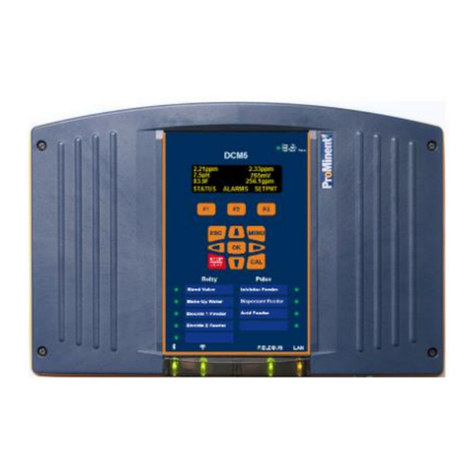
ProMinent
ProMinent DCM510 quick start guide
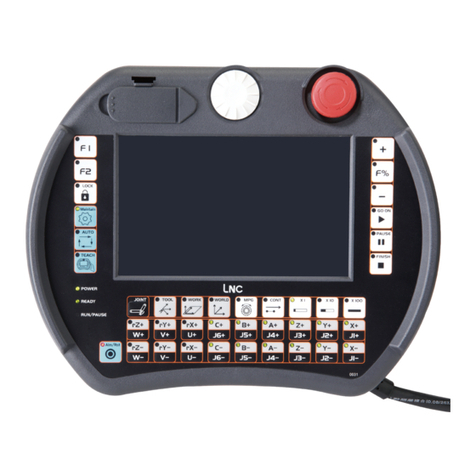
LNC
LNC Robot Series Operation and program manual
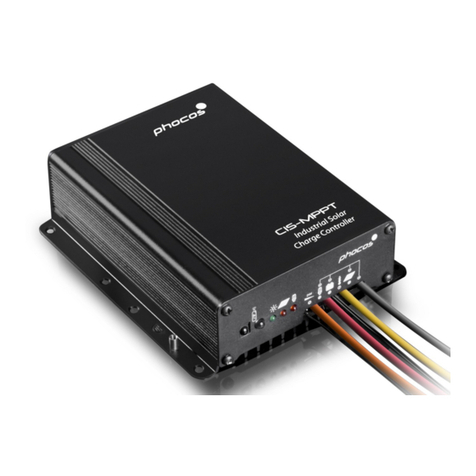
Phocos
Phocos CIS-MPPT 85/20 user manual
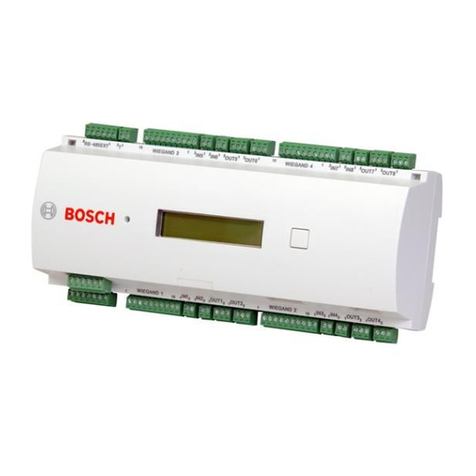
Bosch
Bosch AMC2 Series installation manual
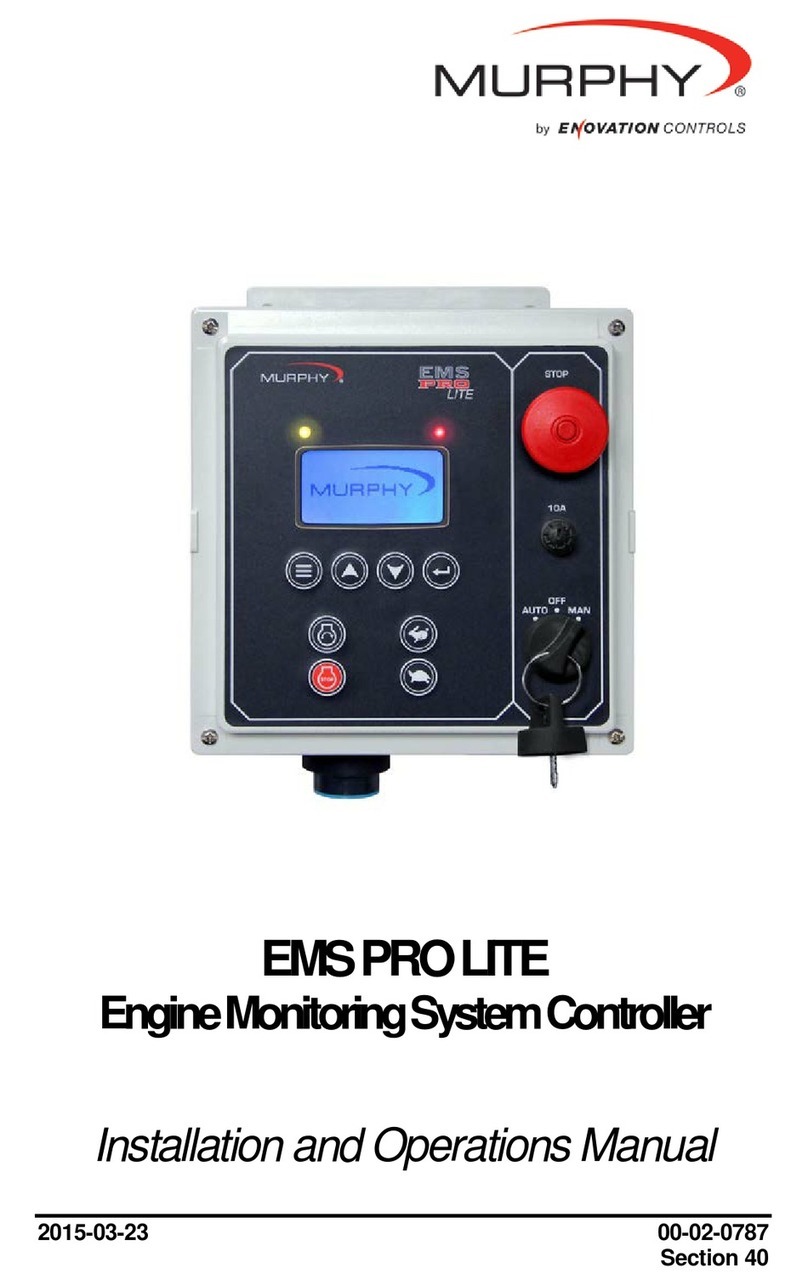
Enovation Controls
Enovation Controls Murphy EMS PRO LITE Installation and operation manual
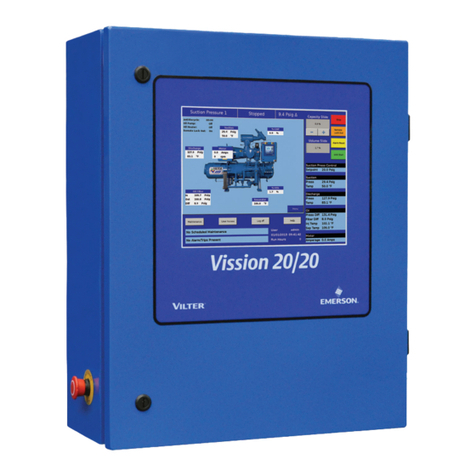
Emerson
Emerson Vilter Vission 20/20 Operation and service manual

